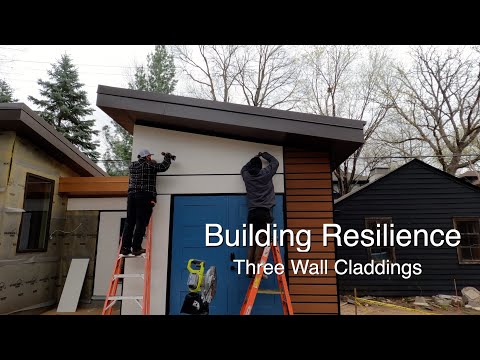Episode 8
Last time on the Model Remodel show we set up a jobsite wood shop to pre-assemble window casings made from KLEER Konceal trim boards, that have rabbeted edges for vinyl siding. After the parts were built up, machined, glued and assembled, they were hung on the wall.
The pre-rabbeted trim boards make vinyl siding look great and they save time.
It was a really happy surprise for me when I discovered that Kleer is producing an exterior trim that already has that rabbet done for us.
It cuts out a lot of labor time and saves us a bunch of money to achieve that same clean look.
All in all, we're really happy to see these and will continue to use them.
—Ben Bogie, Built to Last Design & Build
And that great-looking trimwork frames another goal at Professional Remodeler’s Model Remodel—tidying up the inside and out.
"The goal for the week is finishing up all of our subtrades, getting the mechanical rough-ins completed, and moving towards insulation on the interior while at the same time, guys are rolling with getting the siding on the exterior."
Running exterior trim
"The first thing that we do for any of our exterior trim is established a control line that we find with a transit by measuring our high and low corners.
Next we set our starter strips—we tape the top of the starter strip so it acts as a kickout flashing for the wall, and then we tuck out z-flashing for the mud board up behind that.
Just like any vinyl product you're going to be installing with roofing nails or a stapler, make sure you don't drive those nails tight. You want 1/32 of an inch behind the heads.
We want to see an eighth-inch or a quarter of an inch space between the end of the vinyl and anything solid. The integrated J-channels are almost an inch deep, we cut our pieces to slide about 3/4 inch in, so we've got a quarter inch for expansion and contraction.
There are a couple of ways to go about cutting it, we generally do it on a sliding compound miter saw with the blade put in backwards. Take your time, go through it slow, so it doesn't grab, but it makes really nice clean cuts.
The other option is to use aviation snips. When notching around windows, we generally just do it with aviation snips.
Make your way right down the wall, continue stair stepping your way across, doing your starters, and before you know, you've got a wall covered.
And before you know it, we will be checking in on the next episode, where we install a shower with custom tile in less than a day. The parts snap together and screw in place for the first finished section of the 2017 Model Remodel.











